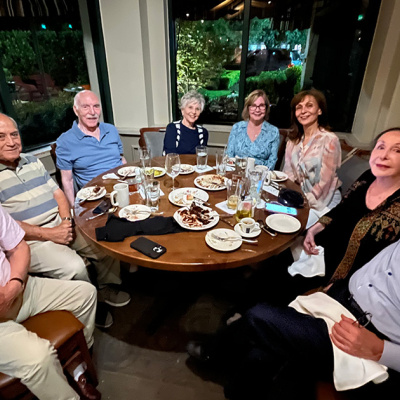UT's New Urban Lab Hopes to Improve Texas Cities

Each year, 60 million or so people around the globe leave their rural areas to move into a city. By 2050, the United Nations estimates that 70 percent of the world’s population will be urbanites. And while cities are thriving and driving the global economy—in the United States, they are responsible for 90 percent of our economic output—this massive shift comes with a whole new set of issues for urban communities.
The LBJ Urban Lab, a new “do-tank,” launched this year, aims to get a better understanding of those real-world issues and look for solutions—in Texas cities and beyond. To do so, the lab tapped LBJ School Professor of Practice Steven Pedigo, BS ’01, as its director.
Why a “do tank” instead of a “think-tank?”
It’s not to say we won’t do peer-to-peer reviewed research. But for the most part it’s going to be applied and in the field. At the end of the day, I’m not a traditional academic. I’ve always worked to help cities, from Jerusalem to New York to Austin. I’ve now worked to advise in 50 cities and organizations across the world.
Why is Texas the place for this kind of research?
We’re the 10th largest economy in the world, but there’s this interesting typology of cities. Austin is a quintessential tech town. We’re one of the few states in the country with binational cities, like El Paso. We have coastal cities, which are having to deal with resiliency issues. In Beaumont, where I grew up, it means thinking about what the economy looks like in 25 years if we decarbonize. How do we regulate scooters in a city like Austin? How do you deal with what’s coming with autonomous vehicles?
Scooters! Besides those, what are some of the challenges Austin faces?
The fall of my senior year at UT [in 2000], a big referendum for light rail got voted down. Looking back now, 20 years later, that could have been a turning point for the city. Growth hadn’t happened at that point, infrastructure was kind of working. Now we are a city that has become a “tween.” We have outgrown our infrastructure. We need to think about connectivity—it drives everything for us. The other thing is that we are a city that’s growing quickly, but our region is kind of sprawling. How do we densify? You can’t solve affordability without thinking about land use and transportation. The government here has been very innovative. But building better engagement between the public and private sectors is something I really want to focus on with the lab. Cities are places where the public, private, and nonprofit sectors have to come together.
This interview has been edited and condensed.






